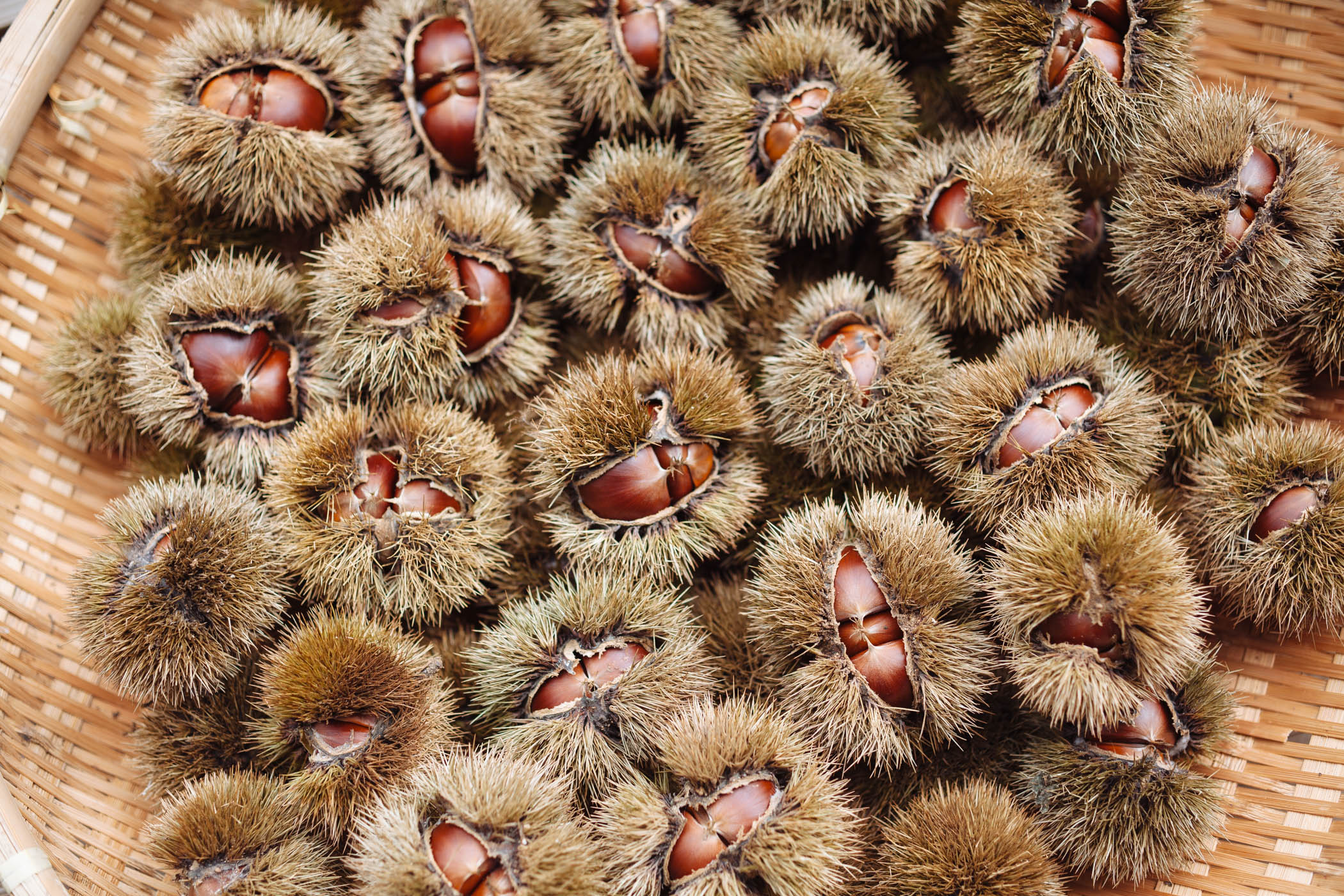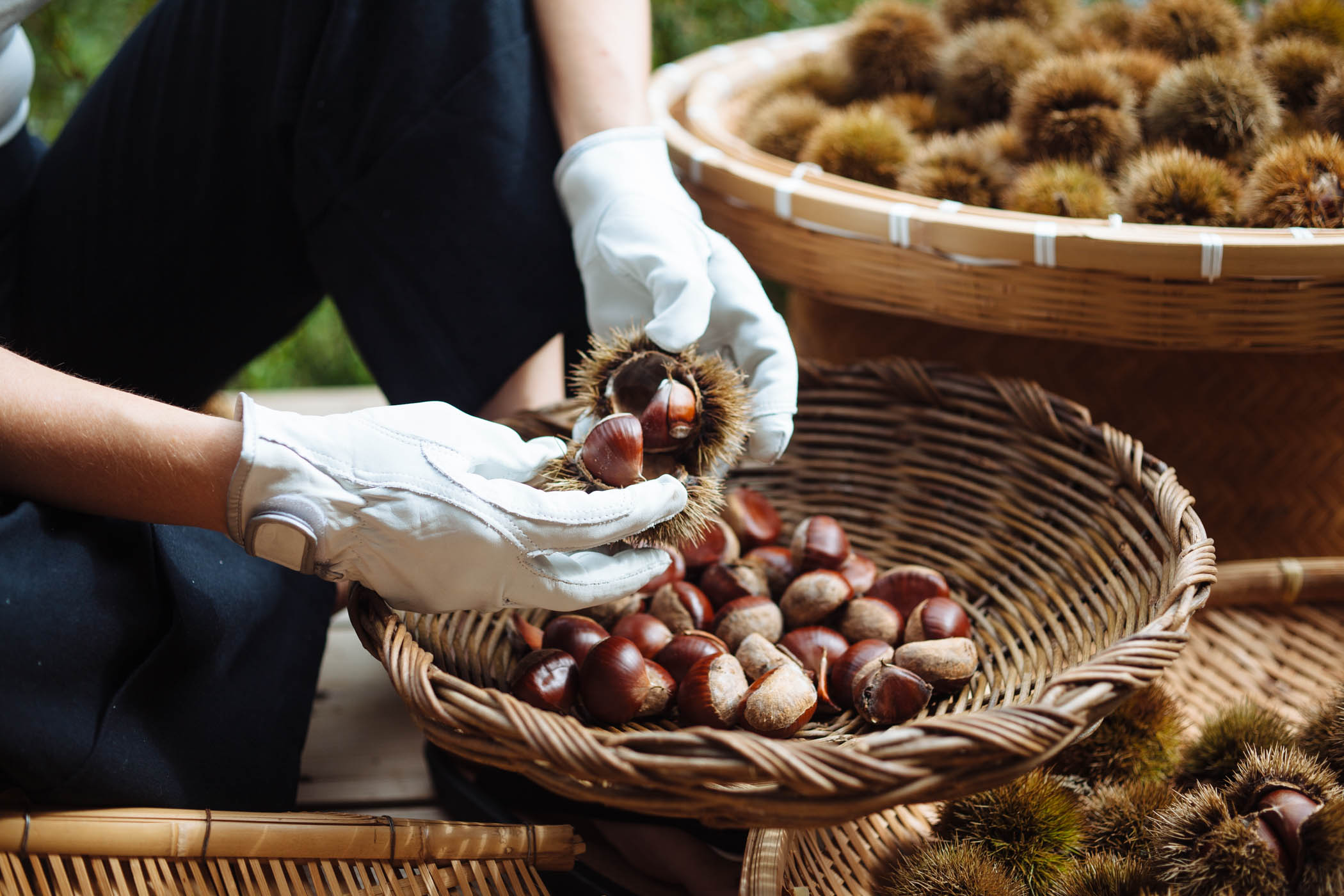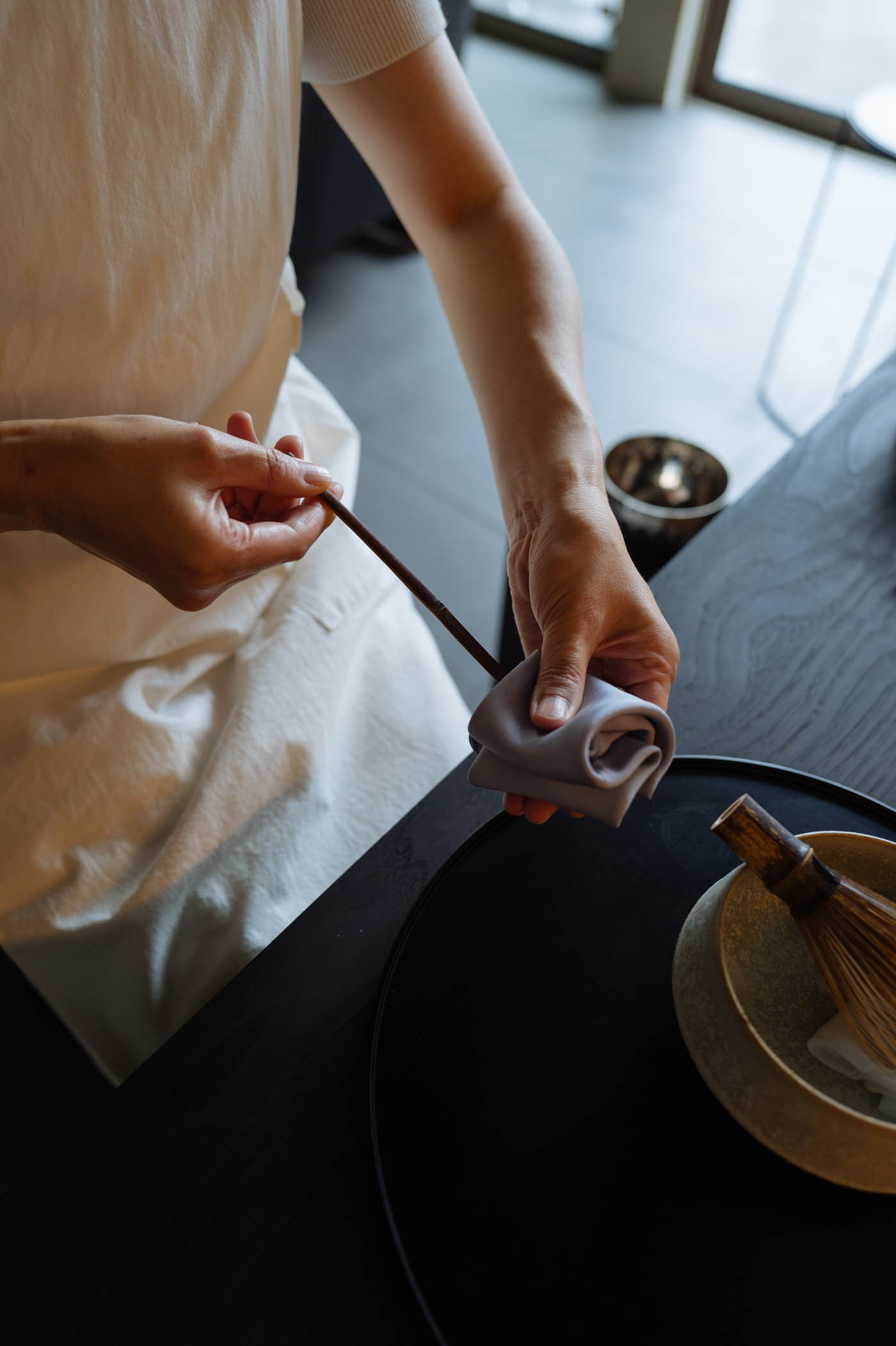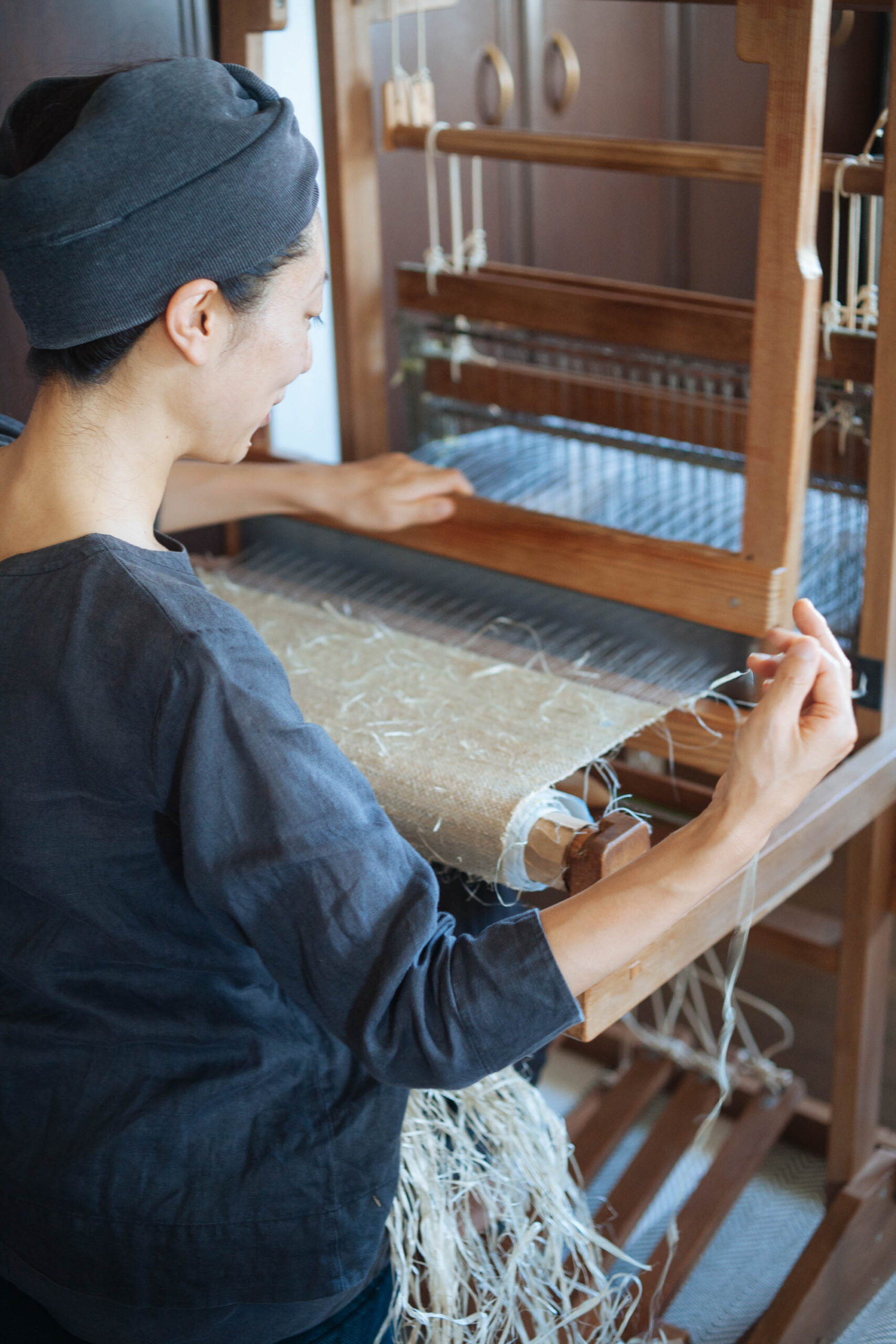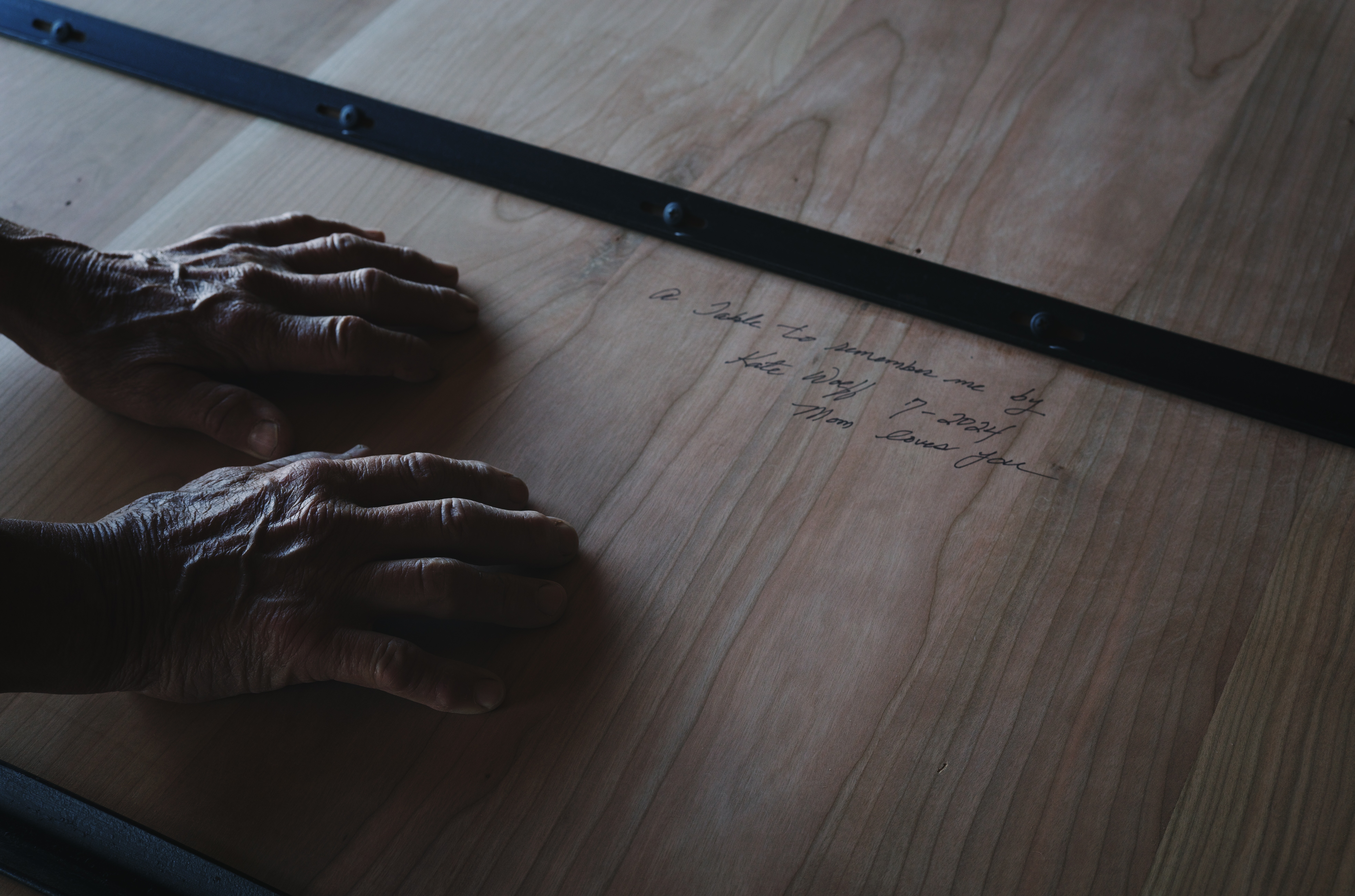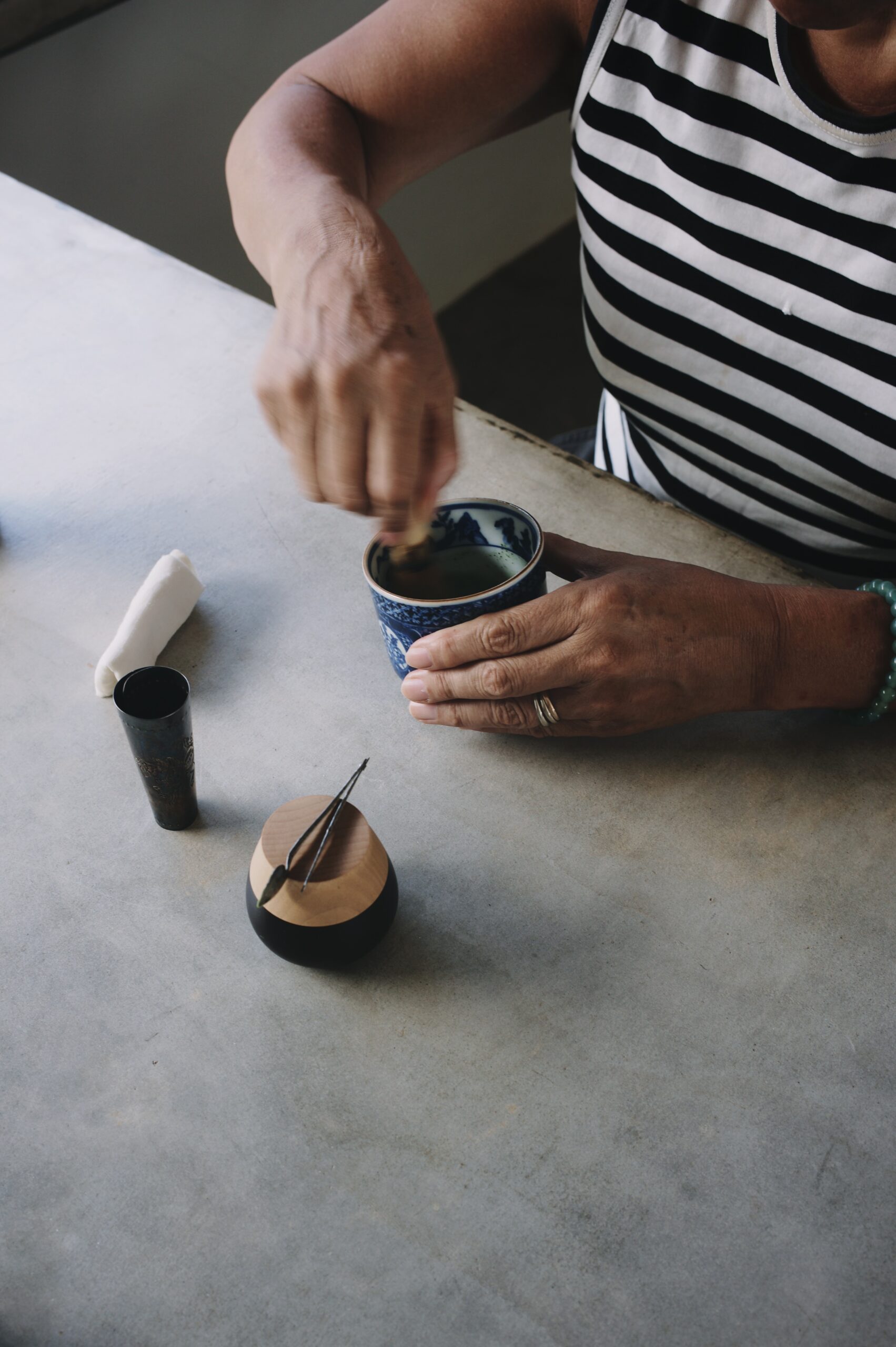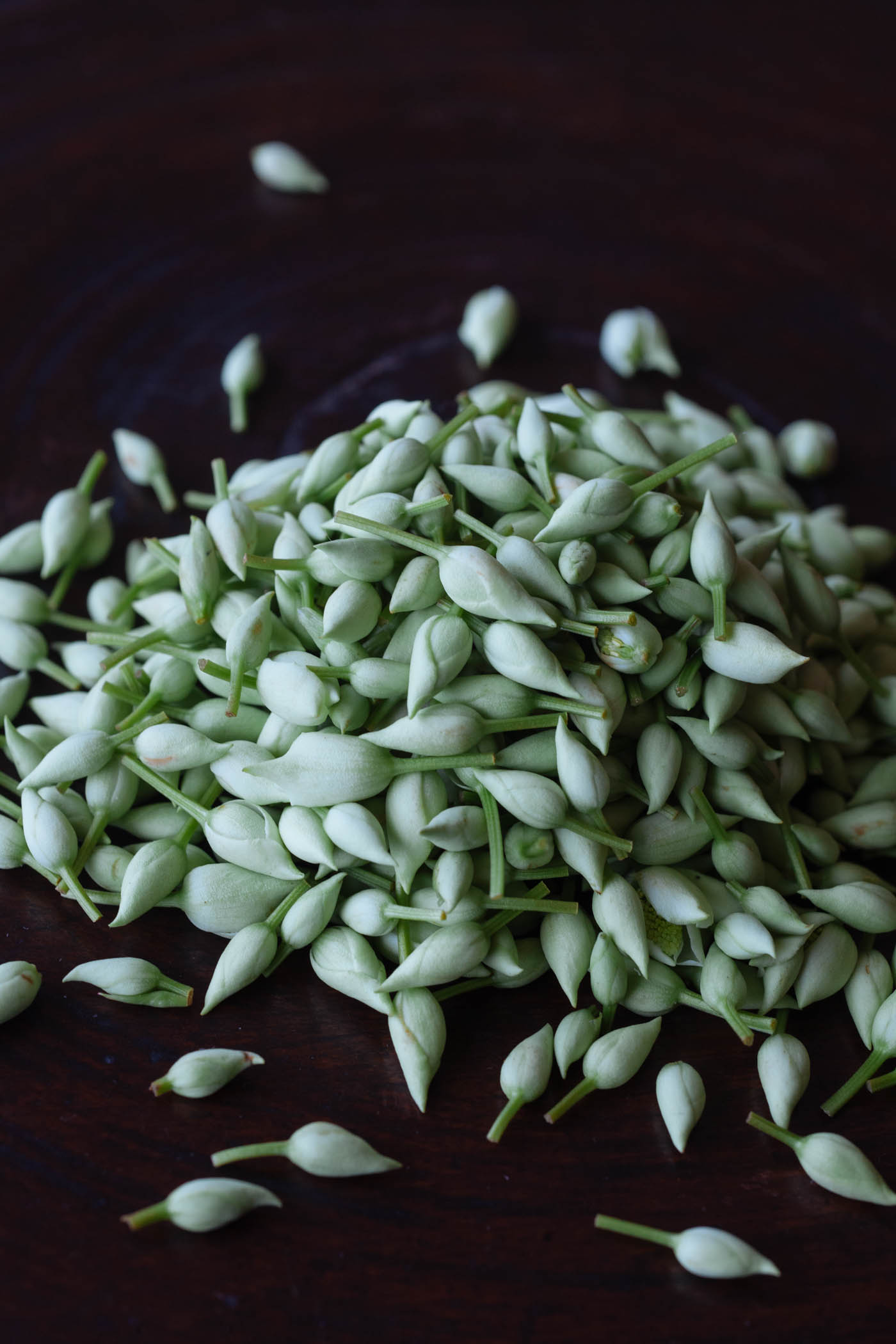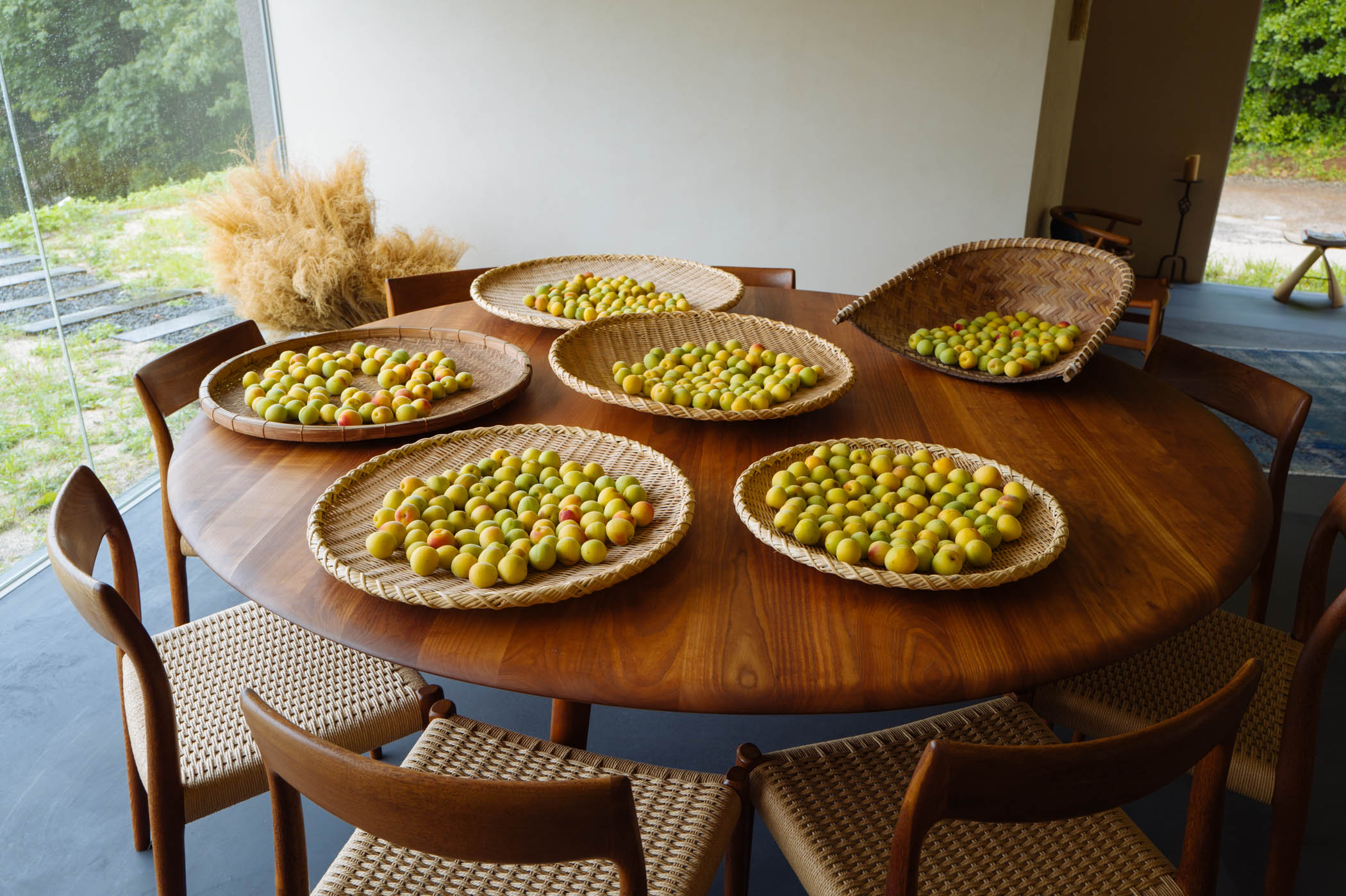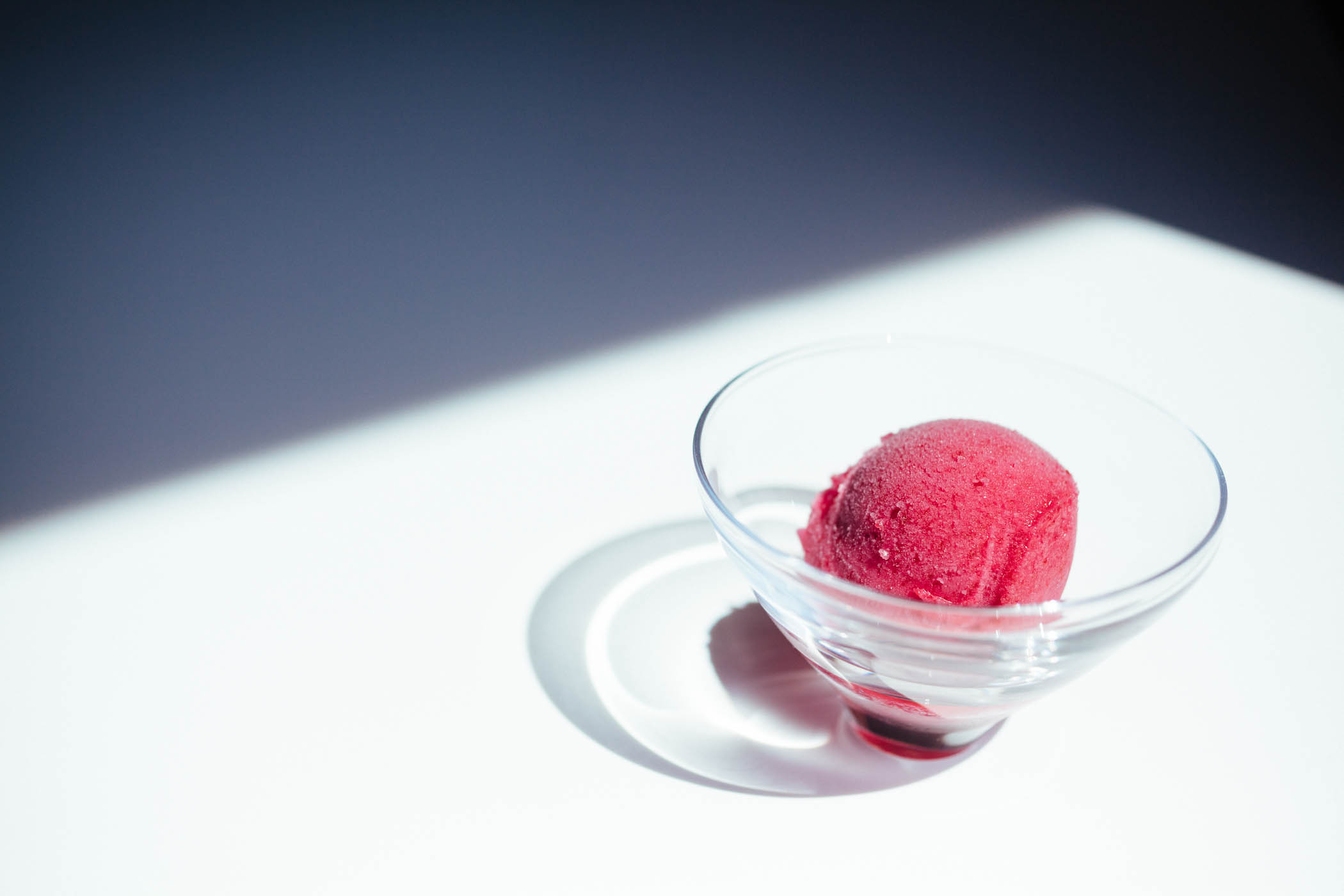A very Japanese take on marron glacé
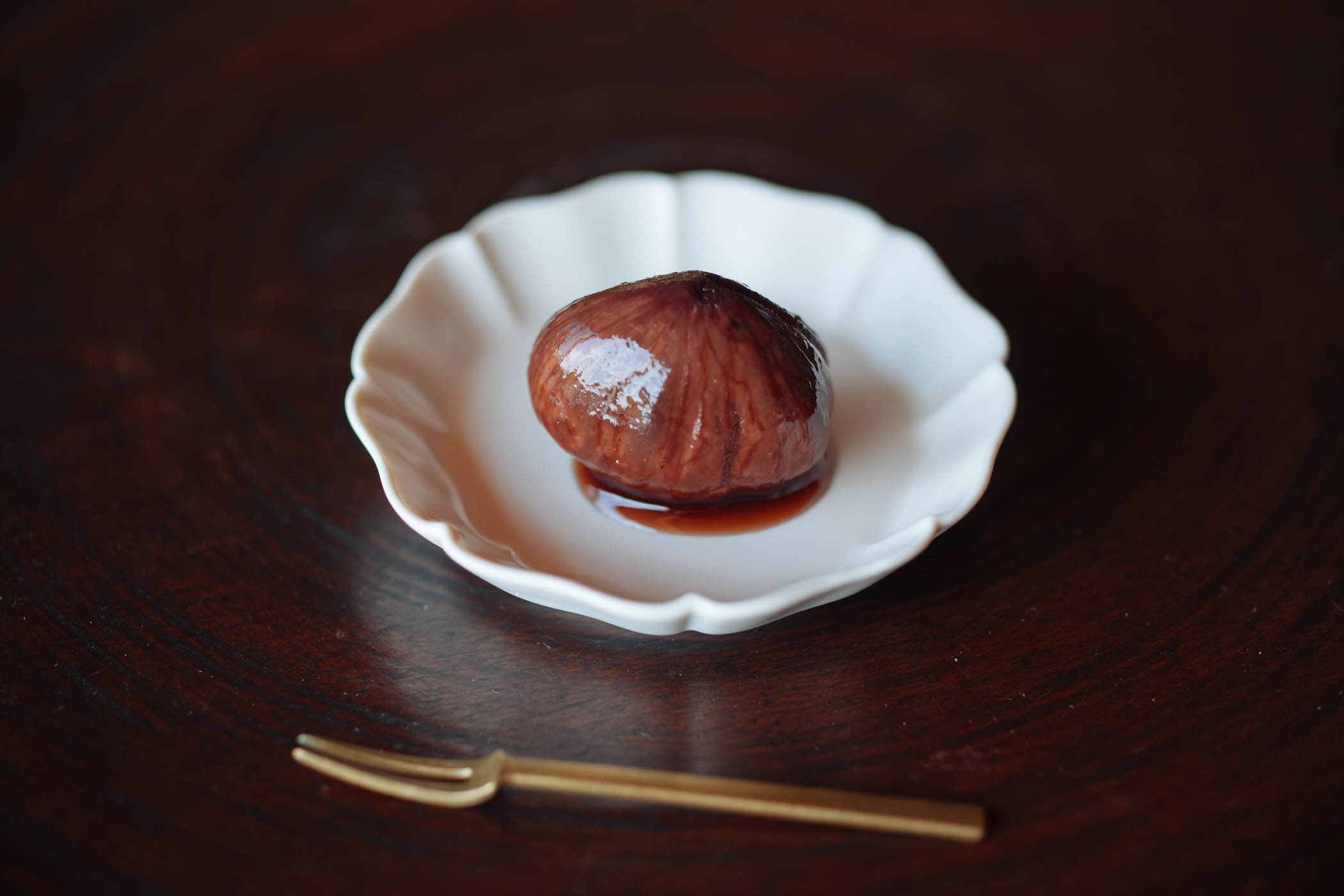
The fierce winds of a typhoon brought down a bounty of chestnuts and we gathered baskets full. Most were still green so we let them ripen for several days on the deck. As I waited for the urchin-like casings to crack I researched the many ways I could use such a large harvest and made a list of chestnut focused foods to try. We feasted on chestnuts for well over a week but one dish wowed more than all of the others, kuri no shibukawani, a very Japanese take on marron glacé.
Underneath the prickly sheath and hard shell, chestnuts have a woody inner skin that is quite astringent, a taste characteristic called shibui in Japanese that falls between bitter and sour. Several methods are utilized in Japanese cooking to remove astringency in a process called aku-nuki. It might be a long soak in cold water as with ume or a douse of wood ash as in the case of warabi, wild bracken ferns. But a trace of astringency is at times appreciated. In fact Japanese cuisine is full of the flavors and textures that are more immediately rejected in the West. Here they are treated as natural elements to be coaxed, when possible, into a pleasant experience on the palate.
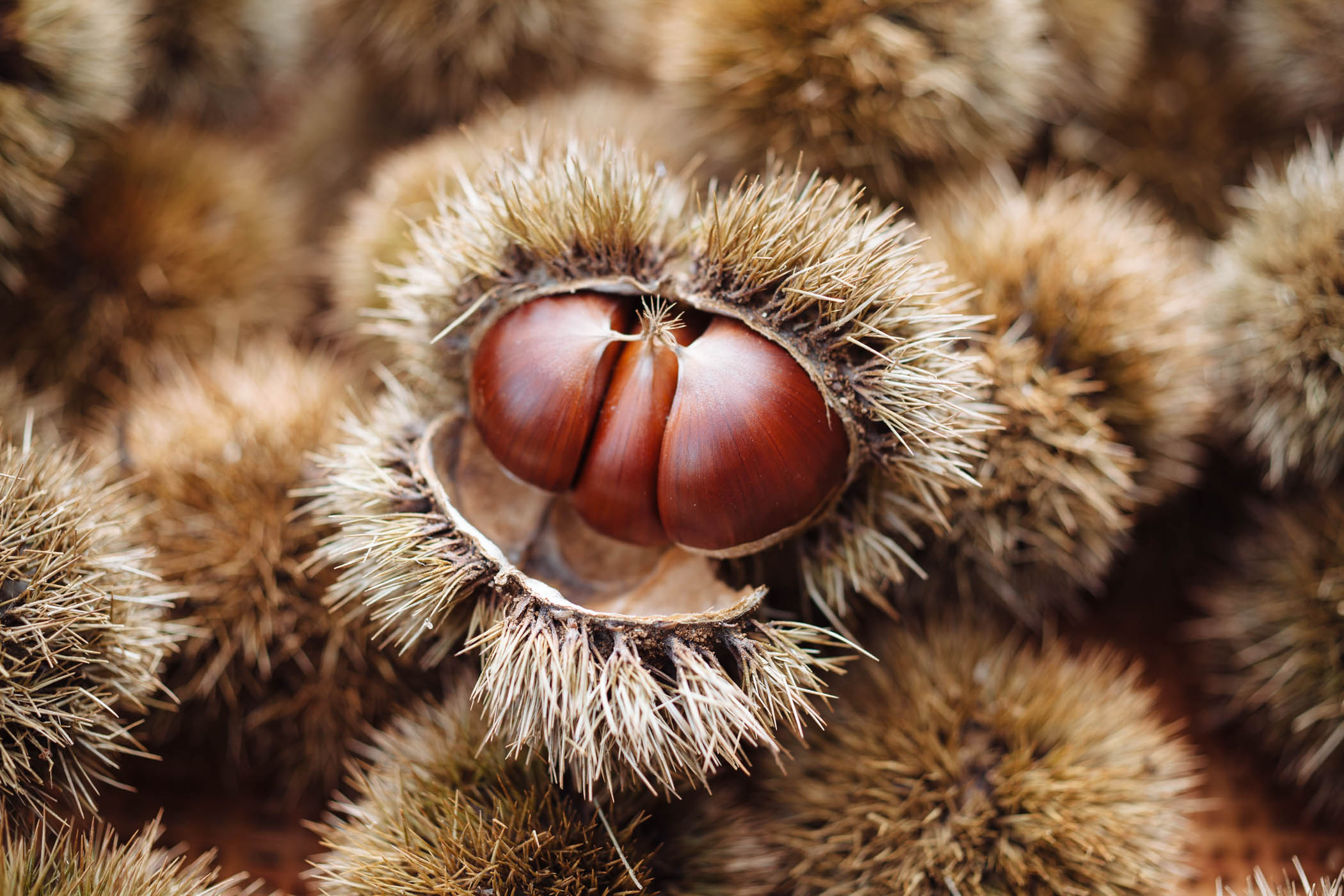
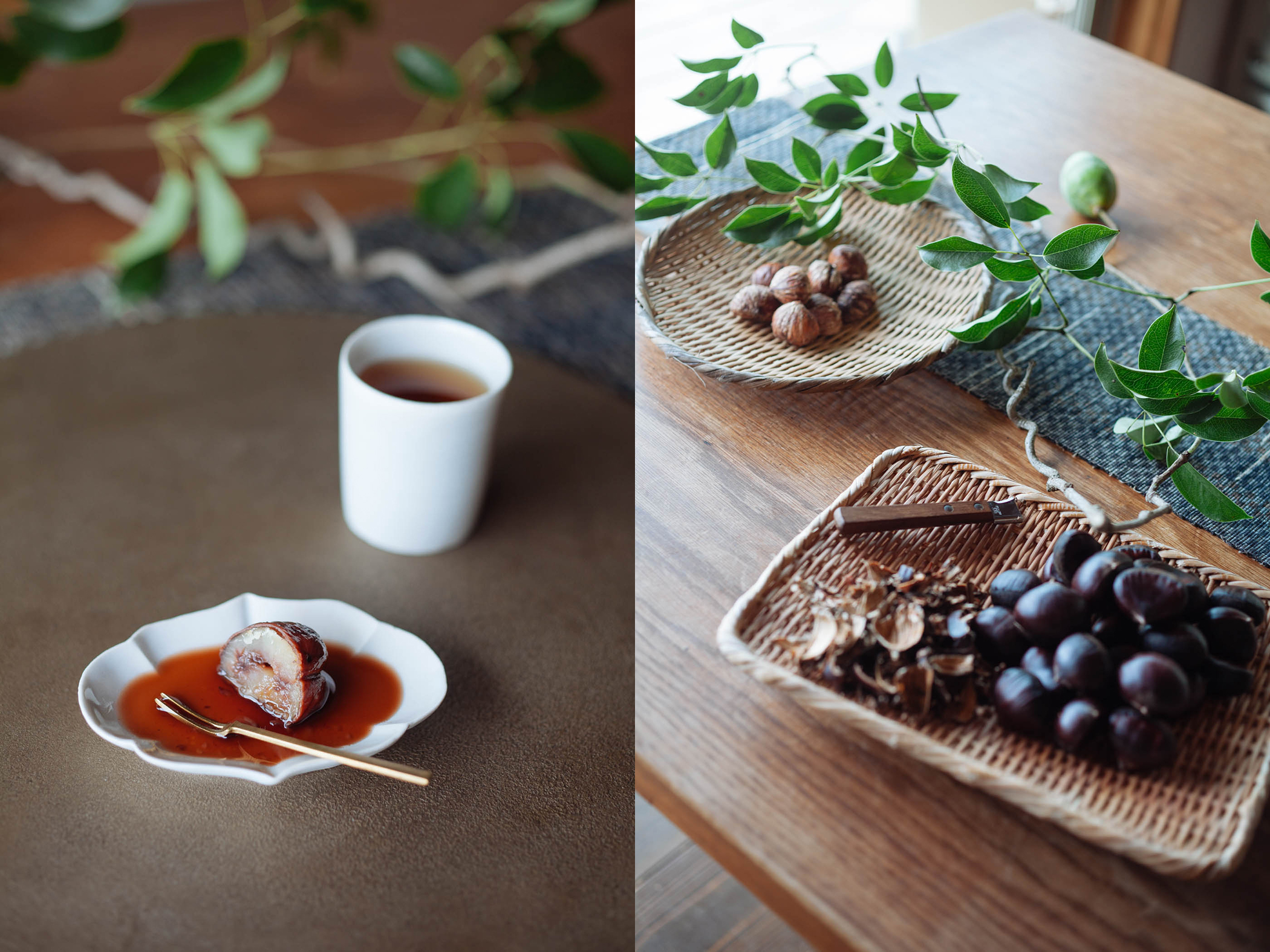
Shibukawani are whole chestnuts stewed in syrup with the astringent inner peel left in tact. Much of the astringency is drawn out but enough remains to add a sophisticated layer of flavor, a slight pucker inducing tingle to complement the sweet nuttiness of chestnuts in syrup.
I get excited about single ingredients and my table is most often adorned with simple, honest foods that showcase them in near original form. And I find chestnuts particularly seductive, the prickly jacket that bursts to reveal smooth glossy shells, the rich eponymous color and strong lines of their gentle curves. Most confections rely on extractions and concentrations of flavor but shibukawani preserves the chestnut in its whole and elegant form, which I find most appealing.
Shibukawani is not hard to make, as in each step is simple, but there are oh, so many steps. If done right it requires a lot of attention on the first day and a little bit more over each of the following several days. This is because adding the sugar in stages and repeatedly heating and cooling the chestnuts in syrup allows the sweetness to mature and penetrate deep into the flesh. The result is a very cultured confection, gently sweetened smooth nutty meat encased in a slightly astringent skin and drenched in a luscious mahogany syrup. The shibukawani can soak in its syrup for many weeks extending our enjoyment of chestnut season far into fall. We have only just finished up the last of a batch made a month ago. Served with a slip of cognac its an utterly elegant way to close out a chilly autumn evening. And when they’re gone the reserved syrup still holds great potential drizzled over vanilla ice cream or in a number of wonderful autumnal cocktails.
